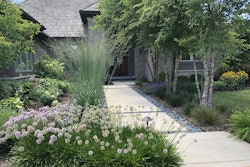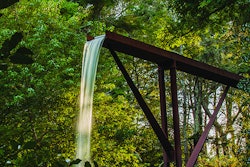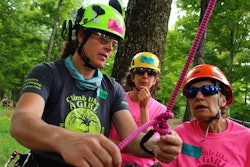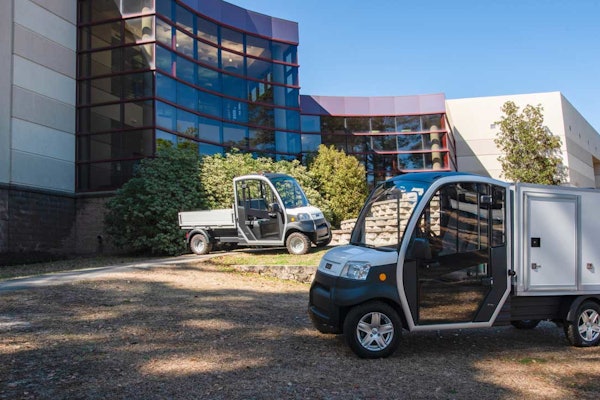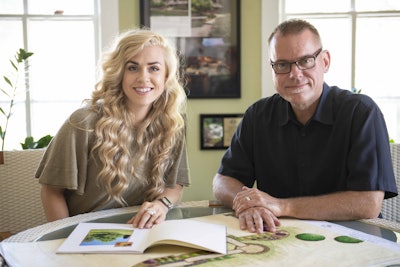 Hannah Paulson (left) and Jim Drzewiecki (right) work together to create custom landscape designs.
Hannah Paulson (left) and Jim Drzewiecki (right) work together to create custom landscape designs.Photo: Renn Kuhnen Photography
At Ginkgo Leaf Studio, based in Cedarburg, Wisconsin, there is a no charge, no obligation meeting first at a prospective client’s house.
“We have a design questionnaire that we email out ahead of that meeting,” says Jim Drzewiecki, owner and principal of Ginkgo Leaf. “We require that they fill it out and return it to us before we meet because we want some insight into what they’re looking to do before we meet with them.”
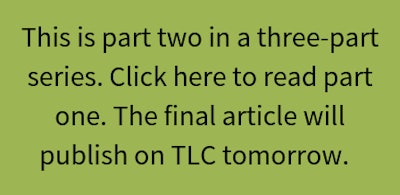
Drzewiecki says those who can’t be bothered to complete the questionnaire or create an idea book typically don’t care that much about the design.
When clients aren’t sure what they want, Drzewiecki makes a point to ask lots of questions. If clients leave sections blank from the questionnaire, he will re-ask the questions during the first meeting, such as what their favorite plants are. If the client doesn’t have any favorites, he will fall back to asking their favorite colors or if there any plants the customer doesn’t like.
“I tend to observe the inside of their house to get a sense of style or things that they like,” says Hannah Paulson, landscape designer/horticulturalist for Ginkgo Leaf. “I think both of us are pretty intuitive on reading people.”
After determining the scope of the project and what the client wants, Drzewiecki say he will look at that scope and determine how many hours he thinks it will take to accomplish that design. He will ask Paulson if she agrees or disagrees on his estimation of the hours of work.
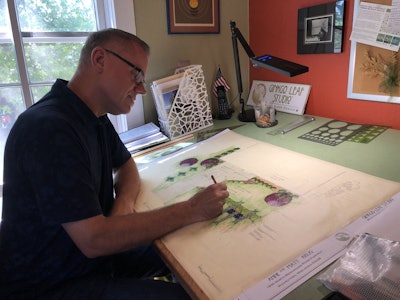 The first design presented to clients is hand drawn.
The first design presented to clients is hand drawn.Photo: Jill Odom/Total Landscape Care
While the creative time varies greatly to come up with the initial design, Drzewiecki says it may take an hour to hand draw something and then a couple of hours for Paulson to render it. It might even take an hour or two to label everything in the design.
“I’m a big believer, even though I taught CAD classes and we both use CAD for our production construction drawings, in designing by hand and producing drawings for the clients to see at the first meeting that are hand drawn and then hand rendered by Hannah,” Drzewiecki says.
Drzewiecki says six to eight hours is what the landscape design firm tends to charge for its hand drawn designs.
“We find that it takes maybe a little more extra time,” Drzewiecki says. “I think clients react to the designs better. They can see the time and thought that went into these drawings. I think there’s a slippery slope if you do everything on a computer because people have this assumption that if it’s on a computer, you did it quickly and easily, and that isn’t the case.”
Paulson then creates the plant book, with the Horticopia software, and pre-costs the designs.
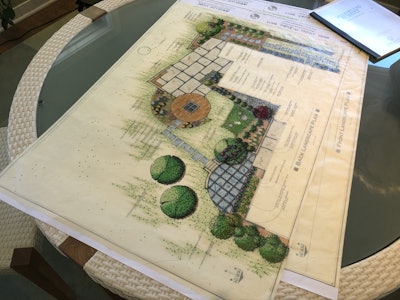 Recently Ginkgo Leaf switched to ink rendering. Previously they used colored pencils.
Recently Ginkgo Leaf switched to ink rendering. Previously they used colored pencils.Photo: Jill Odom/Total Landscape Care
“She counts every plant on a given plan,” Drzewiecki says. “She measures the edging. She measures the bed area. We know what our contractors charge to install all those different pieces. When we present a conceptual design to a client, we think this is very important at that meeting. We can tell them with pretty good certainty what their project is going to cost if they did implement what we drew.”
Drzewiecki believes it is important to discuss the budget early on so they create a design that the client can actually afford.
After the hand-drawn plans are presented to the client, the customer lets Ginkgo Leaf know if there are any changes.
One full revision is built into the design fee. Ginkgo Leaf always anticipates changes going from the hand drawn plant to the CAD plans, but if a client keeps making changes after that point, Drzewiecki does start charging hourly.
With commercial work, there are typically more design revisions, and Drzwiecki says they often don’t make as much money either, which is why they don’t pursue it.
Typically, it takes two or three hours for the firm to turn a hand drawn plan into a CAD plan. Paulson says this depends on the changes the clients make and the complexity of the project.
From the initial concept to the final version on any design, it is about 20 total hours between Drzewiecki and Paulson. Ginkgo Leaf’s design fees average between $3,500 and $4,500.
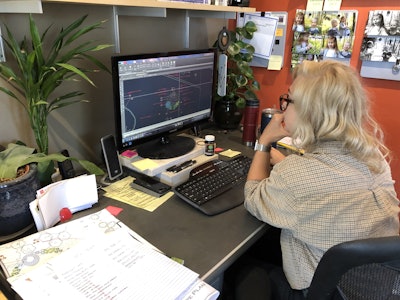 After revisions are made, the hand drawn plans are converted to CAD drawings.
After revisions are made, the hand drawn plans are converted to CAD drawings.Photo: Jill Odom/Total Landscape Care
“We recently set a minimum because there just was no way we could do designs for less,” says Drzewiecki. “We send them a formal design proposal with the scope spelled out. We show them a breakout of our hours, so they understand where that number is coming from. We get two-thirds down to start and to make it official. They don’t pay us the balance until we’re handing them the biddable construction drawing.”
At this point, the customer is free to just say thank you and take the designs from there. Drzewiecki says they will send the plans out to their contractors at no charge if the client says they want to explore working with Ginkgo Leaf’s contractors.
Ginkgo Leaf has three go-to landscape contractors they work with who will install their designs. Two are three-crew companies and another company has a single crew. Ginkgo Leaf divides the work geographically between the companies, as well as the skill sets required and the contractors’ availability.
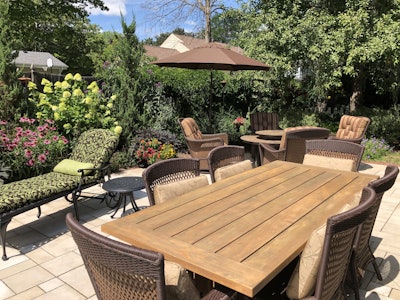 Photo: Jill Odom/Total Landscape Care
Photo: Jill Odom/Total Landscape CareAnother service Ginkgo Leaf offers is bid review, which costs extra. The firm will review the contractors’ submitted bids. Sometimes, they find errors or see the contractor is charging more than the firm originally thought. Drzewiecki can then find out why the costs are different than he originally calculated and explain that to the client. This is considered their silver level.
The gold level is if someone requests a 3D version of the project, but Drzewiecki says almost no one hires them for that. He says they are currently looking at a different software to do more 3D.
“We’re looking into it,” Paulson says. “We’re considering the fact that it may be something that is more desired within the next few years. We want to stay ahead of the game and be fluent in that type of software before there’s a demand for it so that we’re well prepared.”
Drzewiecki says they are always open to new technology and if they hear about anything that can help them, they will explore that idea. Similar to 3D, they are open minded towards virtual reality or augmented reality when it comes to designs.
The platinum level is the project supervision, which includes bid review, lining up the contractors and scheduling them. Drzewiecki and Paulson go to the nursery and personally handpick the trees and shrubs that will be used on the project.
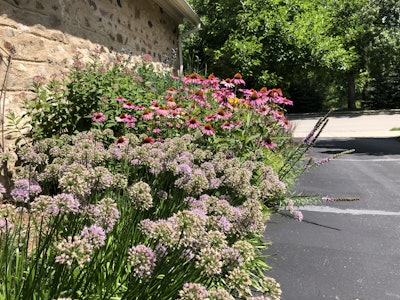 When supervising a project, Drzewiecki and Paulson will hand pick the plants and ensure the plants are laid out properly.
When supervising a project, Drzewiecki and Paulson will hand pick the plants and ensure the plants are laid out properly.Photo: Jill Odom/Total Landscape Care
“On planting day or days, we literally show up in jeans and we lay out every plant,” Drzewiecki says. “After it’s planted, we’ll come back and make sure the plants all ended up where they were supposed to be. We’re basically on call for the project.”
Project supervision is charged as a 10 to 15 percent fee of whatever the project cost is.
Ginkgo Leaf will not manage the project if the client wants to pick their own contractor to do the install and Drzewiecki tells customers this up front.
“We have no relationship with those contractors,” he says. “And really, I don’t know how much management we’d be doing. There’s no incentive for that contractor to actually listen to us at all.”
A majority of the time, this is not an issue and customers are happy to allow Ginkgo Leaf supervise everything from start to finish.
The final step is a walk-through of the property. Drzewiecki says that for project supervised sites, they will check in on the property the following summer as well.
Check back tomorrow for part 3 of this series, where we’ll explore Ginkgo Leaf’s keys to success and plans for the future.
